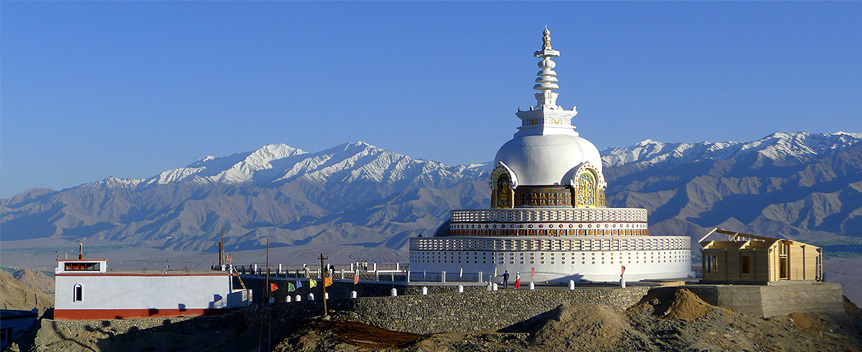Gokyo is a little town in Solukhumbu District in the Himalayas of Nepal, at the foot of Gokyo Ri and on the eastern shore of Gokyo Cho (Dudh Pokhari). The town, scarcely a villa comprising of a few cottages, is situated at a height of 4,750 meters (15,580 ft), making it one of the most noteworthy settlements in Nepal and on the planet, however likely not for all time possessed all year around as it is basically a gathering of hovels taking into account climbers. The town is best seen on Google Earth at 27°57′16″N 86°41′43″E. Toward the southeast is the town of Chharchung. 
In 1995, a torrential slide murdered 42 individuals including 17 remote nationals (13 Japanese, two Canadians, one Irish lady and a German). A tornado in the Bay of Bengal had brought about six feet of snow being dumped into the mountains amid the previous week, fundamentally expanding the torrential slide risk.
Gokyo Lakes are oligotrophic lakes in Nepal's Sagarmatha National Park, situated at an elevation of 4,700–5,000 m (15,400–16,400 ft) above ocean level. These lakes are the world's most noteworthy freshwater lake framework containing six primary lakes, of which Thonak Lake is the largest.In September 2007, Gokyo and related wetlands of 7,770 ha (30.0 sq mi) have been assigned a Ramsar site. 
Lake framework
Gokyo lakes are situated in Khumjung Village Development Committee of Solukhumbu District in Sagarmatha Zone in north-eastern Nepal. Gokyo Cho, likewise called Dudh Pokhari, is the fundamental lake with a region of 42.9 ha (106 sections of land), and the town of Gokyo lies on its eastern shore. Thonak Cho is the biggest lake with a region of 65.07 ha (160.8 sections of land). Gyazumpa Cho is 29 ha (72 sections of land) in size, trailed by Tanjung Cho with a range of 16.95 ha (41.9 sections of land), and Ngojumba Cho with a territory of 14.39 ha (35.6 sections of land). As wellsprings of lasting new water they have high hydrological esteem. They feast upon waters from different sources, for example, drainage from the Ngozumpa ice sheet, a stream originating from the Renjo La go from north-west and another stream beginning from the Ngozumpa ice sheet in the east. These are ice sheet encouraged freshwater wetlands and release water to the Dudh Kosi progress by means of the Taujon Lake and the Longabanga Lake. These lakes are more profound than already accepted by the specialists. Fourth Lake (Thonak Cho) is the most profound lake (62.4m) trailed by the Gokyo Lake which is 43 m.A coordinate association between the Gokyo Lake and the upper Thonak Cho and the Ngozumpa Cho has not been watched, but rather these lakes might be associated by means of underground drainage water. The Gokyo lake framework is actually helpless, as it is lying in a naturally delicate and temperamental zone. The upheaval of Ngozumpa ice sheet is dependably a risk to the presence of the lakes.
The Gokyo lake arrangement of 19 lakes is spread over a range of 196.2 ha (485 sections of land) lying somewhere around 4,600 and 5,100 m (15,100 and 16,700 ft). The wetland lies on the leader of the Dudh Kosi, which plunges from Cho Oyu.
Religious Significance
The Gokyo Lakes are viewed as holy by both Hindus and Buddhists. Around 500 Hindus scrub down in the lakes amid the Janai Purnima celebration, which more often than not happens in the month of August. On a normal 7,000 travelers yearly visit the Gokyo Lakes.The site is loved as the living spot of 'Bother Devata' (Snake God); a sanctuary of the Hindu gods Lords Vishnu and Shiva is arranged at the western corner of the lake. The conviction that winged animals and untamed life in the region ought not be hurt has generally ensured fauna.
Tourism
Gokyo is among the most prevalent visitor goals driving towards the Sagarmatha base camp and other areas.Gokyo town at 4,790 meters (15,720 ft) rise is a noteworthy focus in the zone. The site is two days walk tough from Namche Bazaar.A visit to the region regularly incorporates climbing Gokyo Ri.
The Gokyo Lakes are likewise part of a developed Everest Base Camp trek known as the EBC trek by means of Gokyo Lakes. This trek is generally climbed by individuals with somewhat more opportunity to trek as the trail is 4 days longer than the standard EBC trek. The Gokyo Lakes trek likewise has the additional advantage of being a round course instead of the standard EBC trek which returns along a similar trail.

Post a Comment